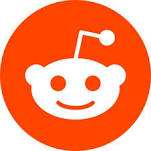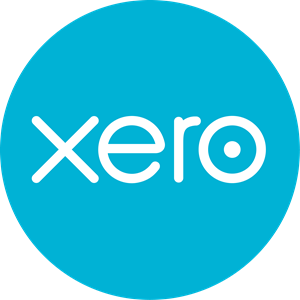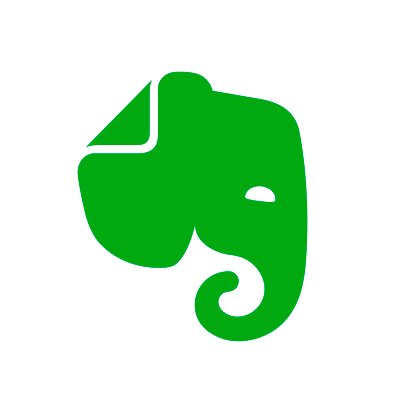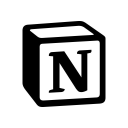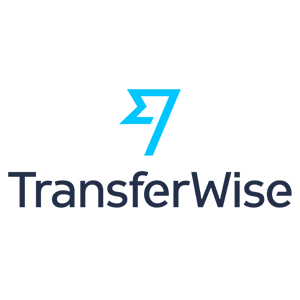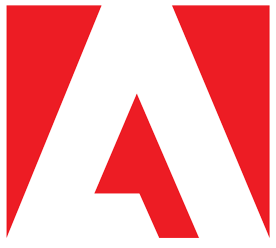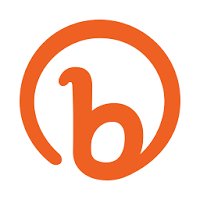How We Started A $300K/Month Business Selling Carry On Travel Backpacks
Hello! Who are you and what business did you start?
Hi, I’m Fred Perrotta, the co-founder, and CEO of Tortuga.
We help travelers avoid the cost and hassle of checking luggage with carry-on-sized travel backpacks and daypacks. Our flagship product and the Wirecutter’s recommendation for Best Carry On Bag is the Outbreaker Backpack.
Over the past nine years, we’ve bootstrapped our way to seven figures in revenue.

What's your backstory and how did you come up with the idea?
In 2009, before we ever knew we’d start a travel company, my best friend Jeremy and I went on a backpacking trip to Eastern Europe. We learned how hard it is to travel with the wrong gear. The shoulder strap ripped off of Jeremy’s bag on the first day. I had to check my giant hiking backpack. The bag arrived on time but was a disorganized mess.
Our trip was a blast, but our luggage was a disaster. Despite weeks of pre-trip research, we couldn’t find the perfect travel backpack. So after the trip, we decided to make it ourselves and co-founded Tortuga.
Context matters. What worked for us won’t work for you. The hot new thing everyone’s talking about probably won’t work either.
During the trip, we talked about our dream travel backpack. Both Jeremy and I had recently read The 4-Hour Work Week. We thought that we could use the book as a blueprint to build a passive income business selling the ultimate travel backpack despite not knowing anything about product design or manufacturing.
At the time, I was working in advertising at Google, and Jeremy was in film school. Tortuga started as a side project. We expected it to be easy: we’d find an existing bag, white-label it, run ads to drive traffic to the website, and collect a check every month. Exactly zero parts of that plan worked out.
Take us through the process of designing, prototyping, and manufacturing your first product.
We were clueless about design and manufacturing.
The design stage went quickly. We hired a designer on eLance and went from idea to tech pack (the blueprint for a physical product) in a few months. Sampling and manufacturing turned out to be a real problem.
We started our search for a factory in China, where most bags were made at the time. Without any connections in Asia, we were stumbling in the dark emailing random factories and working off of unreliable referrals. Finally, after months of trying to get a sample made, we got an email with a picture of our first ever physical sample.

Seeing that image attached to an email was a gut punch. We now refer to that bag as “The Great Monstrosity.” We almost quit right then.
But we didn’t. Instead, we moved our search for a factory to the US. The language barrier was no longer a problem, but the factory that we found was slow, uncommunicative, and not interested in working with us.
After months of redesigns, we were running out of money. We had to choose: either place an order of the bag that we had or run out of money before production. Imperfect seemed better than non-existent, so we placed our first order for 100 bags. Tortuga V1 wasn’t perfect and wasn’t pretty. But it did exist and eventually went on sale. In retrospect, V1 was our minimum viable product.
We sold a few units every month which proved to us that our initial hunch — that people would want a backpack designed specifically for travel — was right. We kept going.

Describe the process of launching the business.
We had the idea for Tortuga in the summer of 2009 and launched the business in the summer of 2011. Kickstarter wasn’t big yet, so we financed our first order out of pocket and with a small loan from the Jewish Free Loan Association. Yes, that’s a real organization, and yes their loans are interest-free.
Our launch went well despite not having any strategy. We announced our launch to friends and family which led to a few sales. Later in our first week, Thrillist wrote about us then Vagablogging posted a review. Those features led to 7 sales, which was exciting for us at the time.
Then everything went quiet. Sales went to zero. For the next year and a half, we tried a bit of everything without much success. Every month, we sold one or two bags. I got excited about every Shopify notification, but they were also a reminder of poorly we were doing. We thought many times about giving up. As you can see from our first homepage, we still had a ton to learn.

The few people who bought the bag liked it. Our reviews were good. Feedback confirmed that we had identified a real problem that other people had and we're solving it for them. We knew that we were on to something, but we were also aware of the shortcomings of the product. It looked bad and turned off all but the most desperate of customers. We kept going because we understood our shortcomings and thought that we could solve them.
In the fall of 2013, we relaunched with a new website and redesigned product. Sales picked up immediately and kept growing into the holiday and the following year.
All of the blogging that we’d been doing for the last two years started to pay off once we had a product worth buying. Having a good product led to a new problem, however. We couldn’t keep Tortugas on the shelf.
We went from unsellable to sold out.
For the next year, we battled months-long stock-outs as we tried to scale through cash flow alone. Eventually, we hit a scale where we could order enough bags to keep them in stock until the next order was ready. We had a successful product. With this success, we decided to keep going by adding more products and starting to build a team.
Since launch, what has worked to attract and retain customers?
Having worked at Google prior to starting Tortuga, I expected to be able to run ads to our site to drive sales. People were searching for our target keywords “travel backpack” and “carry on backpack.” I set up the ad campaigns. They drove traffic but didn’t convert. Refer to our original backpack and website above to see why. We knew the problem but didn’t have the resources to fix it. We had 100 backpacks on hand and needed to sell those before we could design and make a nicer product. We didn’t have the money to redesign the website again, and Shopify’s theme store didn’t exist yet. So we would have to change our marketing channels.
I tried a bit of everything including blogging and SEO based on Pat Flynn’s THE Backlinking Strategy That Works. Yet, nothing worked. Both channels need long-term investment, and we were just trying to stay alive.

In 2014, after we launched the new product and site, we began to see signals that our content and SEO efforts were paying off. Potential customers were finding our blog posts.
After experimenting with every type of travel content, we landed on a niche that was underserved yet in demand and adjacent to our products: packing tips and gear recommendations.
Our blog is now a resource for travelers looking for packing tips, packing lists, and guides to the best travel clothes and gear. Travel bloggers and influencers write inspirational posts and pictures. Our content, like our products, solves specific problems that people are facing. In this way, our blog became the perfect extension of the rest of our brand.

Now we find new topics to cover based on what we would want to read and what travelers are searching for. Rather than churning out endless new posts, we revisit and update our best performing posts and ones that are doing well but could use a boost in the rankings. We update the information, fix broken links, and add more details where needed. Our goal is to create the most authoritative guide to each topic that we cover.
Through our Tortuga Traveling Photographer program, we commission custom photography so that we aren’t using the same stock images as everyone else. A recent post on What to Wear in Thailand includes custom photography of our bags in Thailand. Most posts that we’re competing within the SERPs use a single stock photo at the top.
From our posts, we link to our products where appropriate and never egregiously. To turn visitors into subscribers, we offer a free packing list for subscribing to our email list.
How are you doing today and what does the future look like?
Tortuga is a totally different company from its early days. Today we are a fully remote team of 11 people spread across the US, Canada, and China.

Despite the proliferation of Kickstarter products and VC-backed direct-to-consumer brands, we have remained bootstrapped and profitable.
While we’ve sold through Amazon in the past, we sell exclusively through our own Shopify website.
Our small team is spread across customer service, product, design, marketing, operations, and leadership.
After experimenting with every type of travel content, we landed on a niche that was underserved yet in demand and adjacent to our products: packing tips and gear recommendations.
We’ve learned valuable lessons through trial and error to figure out what works for us. Our growth hasn’t looked like a hockey stick or even been linear.
In 2019, we focused on expanding our product lines through new variations: colors, sizes, and our first-ever women’s fit backpack. In 2020, we’ll expand on that strategy and launch our first bag for students and budget travelers. We started as budget travelers and will be celebrating our 10th anniversary with a product for them. Beyond 2020, we’ll be building more products to solve unique problems for travelers as well as entering new markets like business and adventure travel.
Through starting the business, have you learned anything particularly helpful or advantageous?
Our success is due to not giving up and learning from our mistakes. We’ve always kept moving forward, even during our toughest times as a business. We started with zero experience and learned everything through trial and error. Most importantly, we have always tried to be honest with ourselves about our shortcomings and what was not going well. Then we focused on fixing it. You can’t ignore your problems. Your success is determined by how quickly and accurately you can diagnose your problems and if you can fix them.
After our initial traction, our next hurdle was a mental one. Did we want to grow the company and hire a team? We started with the dream of a 4-Hour Work Week business generating passive income. I left Google in part because my only career path was becoming a manager, which I didn’t want to do. Now I had to decide if I wanted to hire a team and build a real company. As our success has grown, so has our ambition. The first inflection point was creating a second product. The next one was hiring a team.
I brought this challenge to a small retreat that a friend was hosting. I was nervous about hiring and managing. Who would even want to work with us? Could we get anyone good if we only had a part-time job to offer? Everyone at the retreat understood my fears but assured me that I could do it. A few months later, one of the attendees joined the team as our second employee. We’ve worked with another attendee for years as an affiliate and podcast sponsor
As we grew the team in 2015, we set out to relaunch the product line, website, and entire business. However, we changed too much too fast. When we assessed what went wrong, I learned about optimal newness. Since then we’ve made a point of trying to balance innovation with familiarity.
What platform/tools do you use for your business?
- Asana for project management
- Slack for our watercooler
- Zoom for video calls
- 15Five for checking in every Friday, tracking progress on OKRs, and conducting reviews
- Gusto for HR, Transferwise for paying international employees, and Workable for hiring
- Shopify for our ecommerce store
What have been the most influential books, podcasts, or other resources?
- The 4-Hour Work Week for inspiration
- Traction for running effective meetings and quarterly/annual planning
- Who? to hire
- The Hard Thing About Hard Things for management
Advice for other entrepreneurs who want to get started or are just starting out?
Context matters. What worked for us won’t work for you. The hot new thing everyone’s talking about probably won’t work either. You will only find success by optimizing your own business, not copying others.
The tools above don’t matter. Your business’s success isn’t dependent on choosing the right tool. You must be able to find and fix problems.
Are you looking to hire for certain positions right now?
We don’t have any open positions right now, but you can learn more about working at Tortuga and join our Job Alerts list to find out about future openings.
Where can we go to learn more?
- Visit the Tortuga store or blog
- Read my blog or follow me on Twitter
If you have any questions or comments, drop a comment below!

Download the report and join our email newsletter packed with business ideas and money-making opportunities, backed by real-life case studies.

Download the report and join our email newsletter packed with business ideas and money-making opportunities, backed by real-life case studies.

Download the report and join our email newsletter packed with business ideas and money-making opportunities, backed by real-life case studies.

Download the report and join our email newsletter packed with business ideas and money-making opportunities, backed by real-life case studies.

Download the report and join our email newsletter packed with business ideas and money-making opportunities, backed by real-life case studies.

Download the report and join our email newsletter packed with business ideas and money-making opportunities, backed by real-life case studies.

Download the report and join our email newsletter packed with business ideas and money-making opportunities, backed by real-life case studies.

Download the report and join our email newsletter packed with business ideas and money-making opportunities, backed by real-life case studies.
















